Abarth 500 595 695 vs Mercedes G Class – Which car suits you better?
Everyday use, family trips or long-distance drives – here’s where the differences show.
Discover whether Abarth 500 595 695 or Mercedes G Class fits your lifestyle better.
Costs and Efficiency:
Price and efficiency are often the first things buyers look at. Here it becomes clear which model has the long-term edge – whether at the pump, the plug, or in purchase price.
Abarth 500 595 695 has a significantly advantage in terms of price – it starts at 32600 £, while the Mercedes G Class costs 106600 £. That’s a price difference of around 74028 £.
In terms of energy consumption, the advantage goes to the Abarth 500 595 695: with 17.10 kWh per 100 km, it’s decisively more efficient than the Mercedes G Class with 28 kWh. That’s a difference of about 10.90 kWh.
As for range, the Mercedes G Class performs significantly better – achieving up to 468 km, about 203 km more than the Abarth 500 595 695.
Engine and Performance:
Power, torque and acceleration are the classic benchmarks for car enthusiasts – and here, some clear differences start to show.
When it comes to engine power, the Mercedes G Class has a clearly edge – offering 605 HP compared to 155 HP. That’s roughly 450 HP more horsepower.
In acceleration from 0 to 100 km/h, the Mercedes G Class is clearly quicker – completing the sprint in 4.40 s, while the Abarth 500 595 695 takes 7 s. That’s about 2.60 s faster.
In terms of top speed, the Mercedes G Class performs distinct better – reaching 220 km/h, while the Abarth 500 595 695 tops out at 155 km/h. The difference is around 65 km/h.
There’s also a difference in torque: Mercedes G Class pulls clearly stronger with 1164 Nm compared to 235 Nm. That’s about 929 Nm difference.
Space and Everyday Use:
Beyond pure performance, interior space and usability matter most in daily life. This is where you see which car is more practical and versatile.
Seats: Mercedes G Class offers to a small extent more seating capacity – 5 vs 4.
In curb weight, Abarth 500 595 695 is decisively lighter – 1410 kg compared to 2485 kg. The difference is around 1075 kg.
In terms of boot space, the Mercedes G Class offers significantly more room – 640 L compared to 185 L. That’s a difference of about 455 L.
In maximum load capacity, the Mercedes G Class performs decisively better – up to 2010 L, which is about 1460 L more than the Abarth 500 595 695.
When it comes to payload, Mercedes G Class decisively takes the win – 715 kg compared to 385 kg. That’s a difference of about 330 kg.
Who comes out on top?
Overall, the Mercedes G Class shows itself to be dominates this comparison and secures the title of DriveDuel Champion.
It convinces with the more balanced overall package and proves to be the more versatile choice for everyday use.
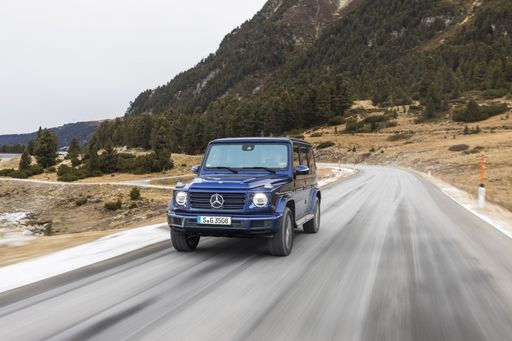 @ Mercedes-Benz Group Media
@ Mercedes-Benz Group Media
Mercedes G Class
Abarth 500 595 695
The Abarth 500, particularly in its 595 and 695 renditions, captures the spirit of Italian motoring with its compact yet aggressive design. Known for its lively performance and distinctive styling, this little powerhouse is a joy to drive, offering an engaging experience that appeals to enthusiasts. With its rich motorsport heritage, the Abarth 500 embodies the essence of fun and excitement on both the streets and the race track.
details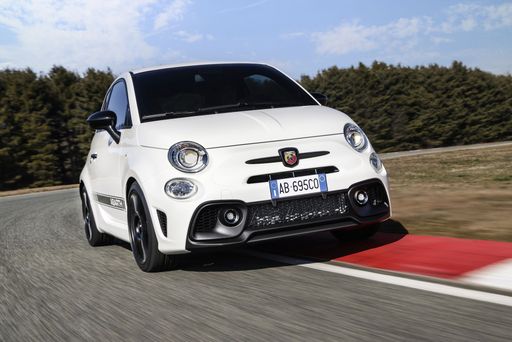 @ Abarth / Stellantis Media
@ Abarth / Stellantis Media
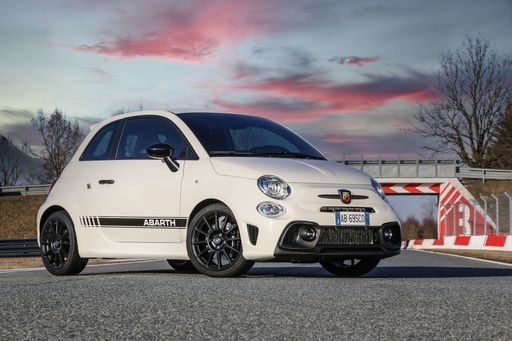 @ Abarth / Stellantis Media
@ Abarth / Stellantis Media
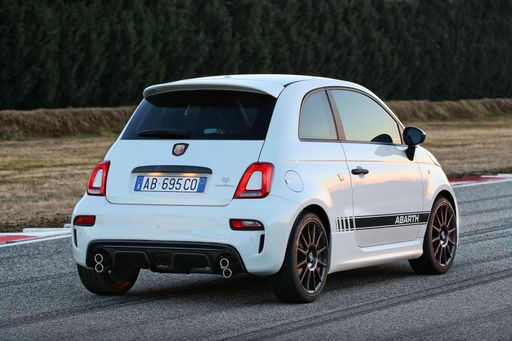 @ Abarth / Stellantis Media
@ Abarth / Stellantis Media
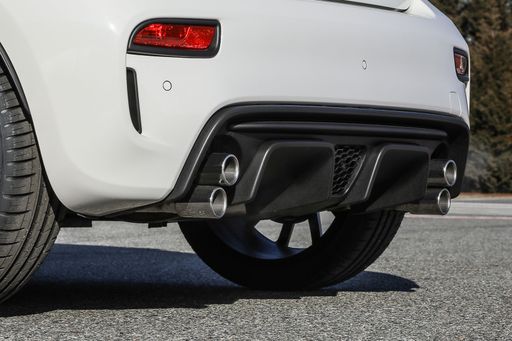 @ Abarth / Stellantis Media
@ Abarth / Stellantis Media
 @ Abarth / Stellantis Media
@ Abarth / Stellantis Media
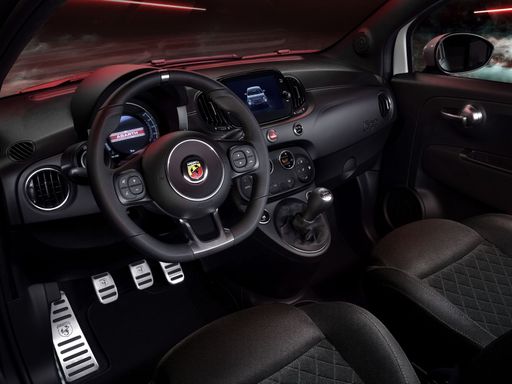 @ Abarth / Stellantis Media
@ Abarth / Stellantis Media
Mercedes G Class
The Mercedes-Benz G-Class stands as a symbol of rugged luxury, combining robust off-road capabilities with sophisticated design. Its iconic boxy shape and imposing presence are complemented by a lavish interior that offers a blend of comfort and cutting-edge technology. Despite its longstanding heritage, the G-Class continues to evolve, maintaining its status as a premier choice for those seeking both adventure and opulence.
details @ Mercedes-Benz Group Media
@ Mercedes-Benz Group Media
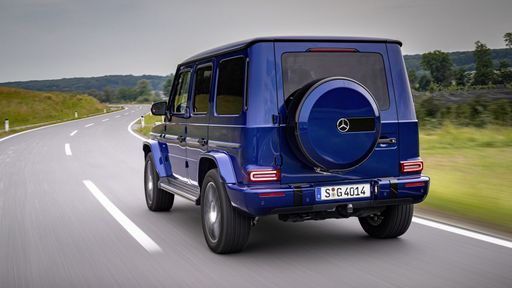 @ Mercedes-Benz Group Media
@ Mercedes-Benz Group Media
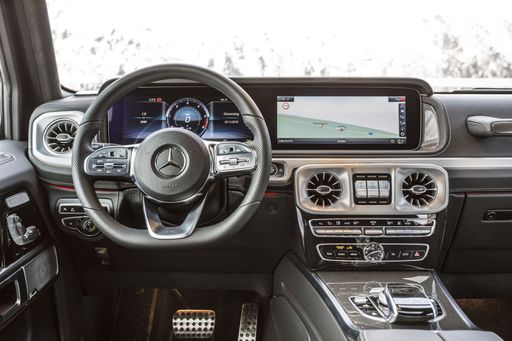 @ Mercedes-Benz Group Media
@ Mercedes-Benz Group Media
 @ Abarth / Stellantis Media
@ Abarth / Stellantis Media
|
 @ Mercedes-Benz Group Media
@ Mercedes-Benz Group Media
|
|
|
|
Costs and Consumption |
|
|---|---|
|
Price
32600 - 39400 £
|
Price
106600 - 171000 £
|
|
Consumption L/100km
-
|
Consumption L/100km
8.7 - 14.7 L
|
|
Consumption kWh/100km
17.1 - 18.8 kWh
|
Consumption kWh/100km
28 kWh
|
|
Electric Range
242 - 265 km
|
Electric Range
468 km
|
|
Battery Capacity
37.80 kWh
|
Battery Capacity
116 kWh
|
|
co2
0 g/km
|
co2
0 - 336 g/km
|
|
Fuel tank capacity
-
|
Fuel tank capacity
100 L
|
Dimensions and Body |
|
|---|---|
|
Body Type
Hatchback
|
Body Type
Off-Roader
|
|
Seats
4
|
Seats
5
|
|
Doors
3
|
Doors
5
|
|
Curb weight
1410 - 1435 kg
|
Curb weight
2485 - 3085 kg
|
|
Trunk capacity
185 L
|
Trunk capacity
620 - 640 L
|
|
Length
3673 mm
|
Length
4624 - 4873 mm
|
|
Width
1682 mm
|
Width
1931 - 1984 mm
|
|
Height
1518 mm
|
Height
1973 - 1983 mm
|
|
Max trunk capacity
550 L
|
Max trunk capacity
1990 - 2010 L
|
|
Payload
370 - 385 kg
|
Payload
415 - 715 kg
|
Engine and Performance |
|
|---|---|
|
Engine Type
Electric
|
Engine Type
Electric, Petrol MHEV, Diesel MHEV
|
|
Transmission
Automatic
|
Transmission
Automatic
|
|
Transmission Detail
-
|
Transmission Detail
Reduction Gearbox, Automatic Gearbox
|
|
Drive Type
Front-Wheel Drive
|
Drive Type
All-Wheel Drive
|
|
Power HP
155 HP
|
Power HP
387 - 605 HP
|
|
Acceleration 0-100km/h
7 s
|
Acceleration 0-100km/h
4.4 - 5.8 s
|
|
Max Speed
155 km/h
|
Max Speed
180 - 220 km/h
|
|
Torque
235 Nm
|
Torque
760 - 1164 Nm
|
|
Number of Cylinders
-
|
Number of Cylinders
6 - 8
|
|
Power kW
114 kW
|
Power kW
285 - 445 kW
|
|
Engine capacity
-
|
Engine capacity
2989 - 3982 cm3
|
General |
|
|---|---|
|
Model Year
2023
|
Model Year
2024 - 2025
|
|
CO2 Efficiency Class
A
|
CO2 Efficiency Class
A, G
|
|
Brand
Abarth
|
Brand
Mercedes-Benz
|
Is the Abarth 500 595 695 offered with different drivetrains?
The Abarth 500 595 695 is offered with Front-Wheel Drive.
The prices and data displayed are estimates based on German list prices and may vary by country. This information is not legally binding.
